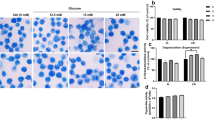Abstract
The lysophosphatidylserine-induced activation of mast cells has been studied in preparations obtained from different rodents. In mouse and gerbil peritoneal mast cells lysophosphatidylserine behaves as an agonist, inducing noncytotoxic histamine release at 0.2–8 μM. In rat peritoneal and pleural mast cells lysophosphatidylserine is ineffective, but the histamine-releasing activity becomes manifest upon the addition of suboptimal concentrations of other mast cell activators. The common structure-activity relationship shows the link between these effects of lysophosphatidylserine but the calcium requirement indicates differences in the mechanism of action. Histamine release in mouse mast cells is independent of external calcium. Thus, lysophosphatidylserine induces mobilization of endogenous calcium stores in these cells. By contrast, histamine release in gerbil and rat mast cells is dependent on the addition of external calcium indicating that the phospholipid promotes calcium influx. While in gerbil mast cells calcium influx is promoted by lysophosphatidylserine alone, in rat it requires the combined action of the phospholipid and other mast cell agonists. Differently from lysophosphatidylserine, compound 48/80 elicits histamine release in rat and gerbil mast cells. Mouse mast cells are unaffected. Thus, gerbil mast cells are the only preparation in which the action of these two agonists can be observed simultaneously.
Similar content being viewed by others
References
A. Bruni, E. Bigon, A. Battistella, E. Boarato, L. Mietto andG. Toffano,Lysophosphatidylserine as histamine releaser in mice and rats (submitted to Agents and Actions).
L. Mietto, E. Boarato, G. Toffano, E. Bigon andA. Bruni,Local effects of lysophosphatidylserine in rats (submitted to Agents and Actions).
T.W. Martin andD. Lagunoff,Interaction of lysophospholipids and mast cells, Nature, Lond.279, 250–252 (1979).
G.A. Smith, T.R. Hesketh, R.W. Plumb andJ.C. Metcalfe,The exogenous lipid requirement for histamine release from rat peritoneal mast cells stimulated by concanavalin A, FEBS Letters105, 58–62 (1979).
A. Bruni, E. Bigon, E. Boarato, L. Mietto andG. Toffano,Interaction between nerve growth factor and lysophosphatidylserine on rat peritoneal mast cells, FEBS Letters138, 190–192 (1982).
G.B. West,Histamine release by sugar polymers in the rat, Agents and Actions11, 75–76 (1981).
E.L. Becker andP.M. Henson,In vitro studies of immunologically induced secretion of mediators from cells and related phenomena, Adv. Immunol.17, 93–193 (1973).
J.L. Mongar, Measurement of histamine-releasing activity. InCiba Foundation Symposium on Histamine, pp. 74–91 (EdsG.E.W. Wolstenholme andC.M. O'Connor). Churchill, London 1956.
E. Bigon, E. Boarato, A. Bruni, A. Leon andG. Toffano,Pharmacological effects of phosphatidylserine liposomes. The role of lysophosphatidylserine, Br. J. Pharmac.67, 611–616 (1979).
G.B. Ansell andJ.N. Hawthorne,Phospholipids. Chemistry, Metabolism and Function, B.B.A. Library, vol. 3. Elsevier, Amsterdam 1964.
D. Lagunoff,The mechanism of histamine release from mast cells, Biochem. Pharmac.21, 1889–1896 (1972).
I. Moodley, J.L. Mongar andJ.C. Foreman,Histamine release induced by dextran: the nature of the dextran receptor, Eur. J. Pharmac.83, 69–81 (1982).
P.A. Shore, A. Burkhalter andV.H. Cohn,A method for the fluorimetric assay of histamine in tissues, J. Pharmac. exp. Ther.127, 182–186 (1959).
A. Goth,Effect of drugs on mast cells, Adv. Pharmac.5, 47–78 (1967).
O.H. Lowry, J.V. Passoneau, F.X. Hasselberger andD.W. Schulz,Effect of Ischemia on known substrates and co-factors of the glycolytic pathway in brain, J. biol. Chem.239, 18–30 (1964).
G. Atkinson, M. Ennis andF.L. Pearce,The effect of alkaline earth cations on the release of histamine from rat peritoneal mast cells treated with compound 48/80 and peptide 401, Br. J. Pharmac.65, 395–402 (1979).
F.L. Pearce,Calcium and histamine secretion from mast cells, Prog. Med. Chem.19, 59–109 (1982).
T.H.P. Hanahoe, T. Tanner andG.B. West,Resistance of rats to the potentiating action of phosphatidylserine on dextran responses, J. Pharm. Pharmac.25, 429–431 (1973).
V. Bocchini andP.U. Angeletti,The nerve growth factor: purification as a 30,000-molecular-weight protein, Proc. natn. Acad. Sci. USA64, 787–794 (1969).
J.H. Baxter andR. Adamic,Differences in requirements and actions of various histamine-releasing agents, Biochem. Pharmac.27, 497–503 (1978).
B. Diamant andP.G. Kruger,Histamine release from isolated rat peritoneal mast cells induced by adenosine-5′-triphosphate, Acta physiol. scand.71, 291–302 (1967).
F.L. Pearce andJ. Clements,Effect of disodium cromoglycate and cyclic AMP-active drugs on cytotoxic histamine release from rat mast cells, Biochem. Pharmac.31, 2247–2250 (1982).
A. Goth, H.R. Adams andM. Knoohuizen,Phosphatidylserine: selective enhancer of histamine release, Science, N.Y.173, 1034–1035 (1971).
T. Ishizaka, F. Hirata, K. Ishizaka andJ. Axelrod,Stimulation of phospholipid methylation, Ca 2+ influx, and histamine release by bridging of IgE receptors on rat mast cells, Proc. natn. Acad. Sci. USA77, 1903–1906 (1980).
T. Suzuki, T. Saito-Taki, R. Sadasivan andT. Nitta,Biochemical signal transmitted by Fc γ receptors: phospholipase A 2 activity of Fc γ 2b receptor of murine macrophage cell line P388D, Proc. natn. Acad. Sci. USA79, 591–595 (1982).
A.T.M. van der Steen, W.A.C. de Jong, B. de Kruijff andL.L.M. van Deenen,Lipid dependence of glycophorin-induced transbilayer movement of lysophosphatidylcholine in large unilamellar vesicles, Biochim. biophys. Acta647, 63–72 (1981).
Y. Stein andO. Stein,Metabolism of labelled lysolecithin, lysophosphatidylethanolamine and lecithin in the rat, Biochim. biophys. Acta464, 530–546 (1966).
D.L. Wilhelm, L.C.J. Yong andS.G. Watkins,The mast cells: distribution and maturation in the rat, Agents and Actions8, 146–152 (1978).
F.L. Pearce andM. Ennis,Isolation and some properties of mast cells from the mesentery of the rat and guinea pig, Agents and Actions10, 124–131 (1980).
F. Erjavec,Species and tissue differences of histamine storage and release, Agents and Actions12, 81–85 (1982).
Author information
Authors and Affiliations
Rights and permissions
About this article
Cite this article
Boarato, E., Mietto, L., Toffano, G. et al. Different responses of rodent mast cells to lysophosphatidylserine. Agents and Actions 14, 613–618 (1984). https://doi.org/10.1007/BF01978895
Received:
Issue Date:
DOI: https://doi.org/10.1007/BF01978895




